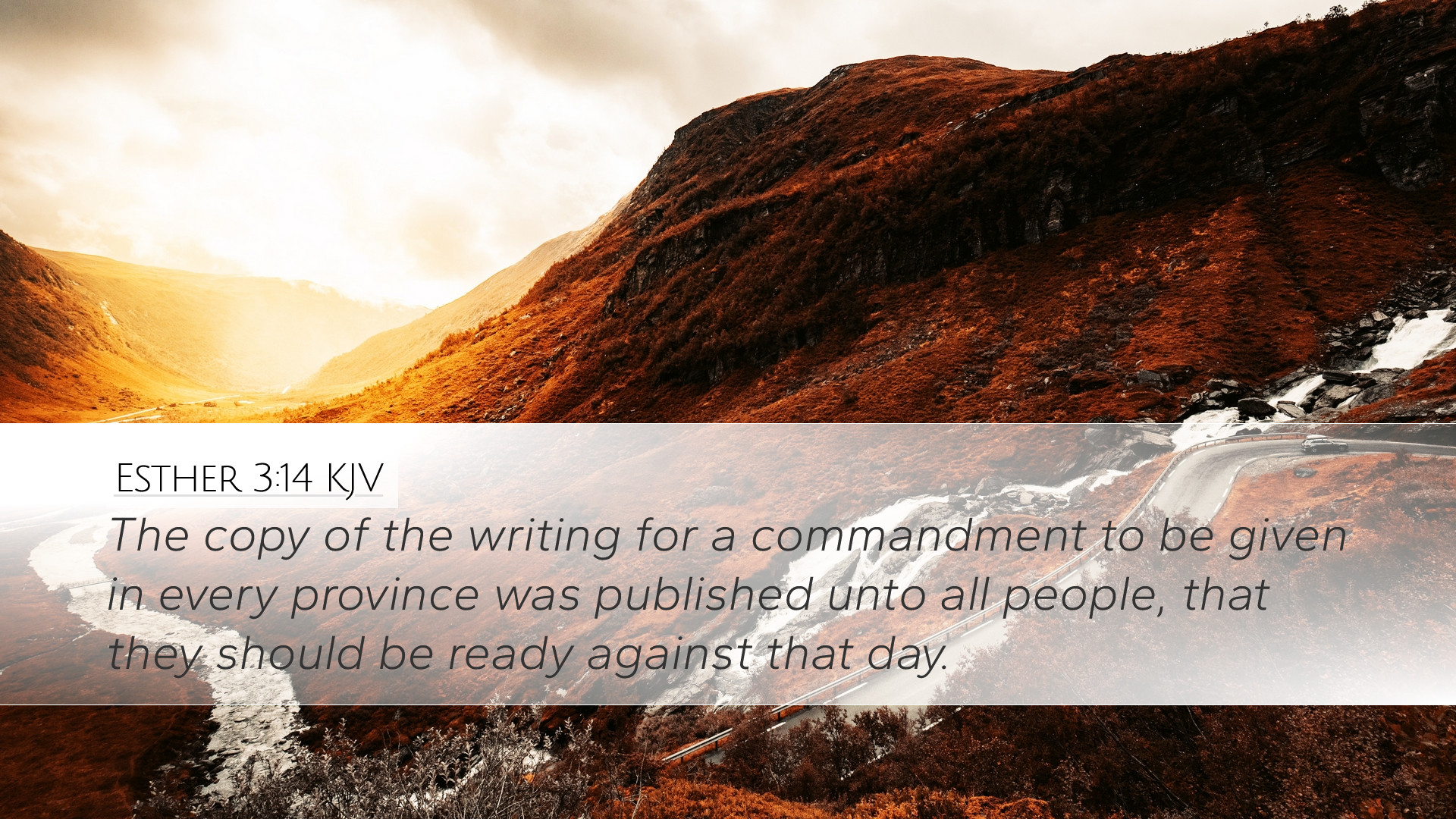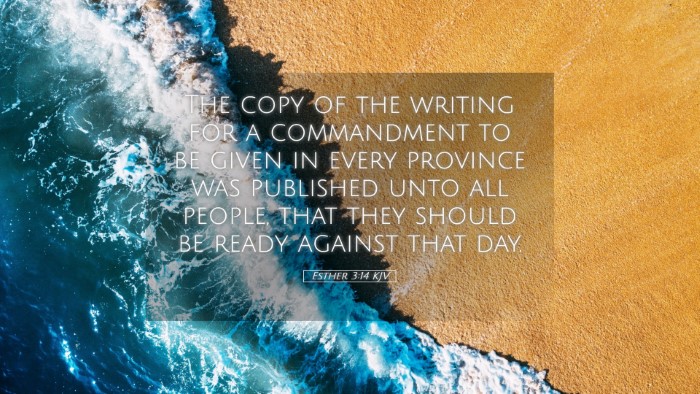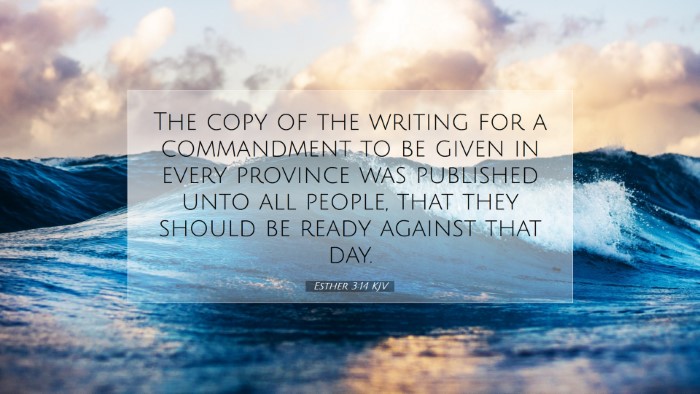Old Testament
Genesis Exodus Leviticus Numbers Deuteronomy Joshua Judges Ruth 1 Samuel 2 Samuel 1 Kings 2 Kings 1 Chronicles 2 Chronicles Ezra Nehemiah Esther Job Psalms Proverbs Ecclesiastes Song of Solomon Isaiah Jeremiah Lamentations Ezekiel Daniel Hosea Joel Amos Obadiah Jonah Micah Nahum Habakkuk Zephaniah Haggai Zechariah MalachiEsther 3:14
Esther 3:14 KJV
The copy of the writing for a commandment to be given in every province was published unto all people, that they should be ready against that day.
Esther 3:14 Bible Commentary
Commentary on Esther 3:14
Esther 3:14 states, "And the copy of the writing for a commandment to be given in every province was published unto all people, that they should be ready against that day." This verse captures a pivotal moment in the narrative of Esther, reflecting the themes of decree, fate, and the struggle for survival that permeate the text.
Contextual Background
The Book of Esther narrates the story of a Jewish girl who becomes queen of Persia and finds herself in a position to save her people from a sinister plot. Haman, the king's adviser, orchestrates a plan for the annihilation of the Jews, and this decree dispatches a chilling edict across the provinces, encapsulated in verse 14.
The Significance of the Decree
The issuing of this decree demonstrates the power of the king's word in Persian governance, a theme echoed throughout historical texts (Barnes). The Jewish people confront the reality of a systematic extermination, underscoring the harsh consequences of political decisions made in the courts of power.
Public Domain Insights
- Matthew Henry emphasizes the importance of the decree's public nature. The words "that they should be ready against that day" indicate not just the notification of the impending doom but also a call to preparedness. Henry suggests that this readiness is not merely physical but spiritual and societal.
- Albert Barnes explores the reaction of the Jews to the decree. He reflects on how this command would have struck terror into the hearts of the Jewish people, illustrating their vulnerable position and their need for divine intervention amidst despair.
- Adam Clarke focuses on the broader implications of such a decree. He posits that the text serves as a reminder of the ongoing struggle between good and evil, as seen in the juxtaposition of Haman's evil plot against the innocent lives of the Jewish people.
The Role of Public Decrees
Public decrees carry weighty implications in both historical and theological contexts. The decree in Esther not only serves as a literal command but symbolizes a broader commentary on the voice of authority and its potential to affect society. The Jews, as Clarke notes, have their very existence threatened by a document that simply states, "All Jews shall be killed."
Theological Reflections
This moment invites contemplation on God's sovereignty amidst seemingly dire circumstances. Pastors and theologians may draw from this narrative to illustrate God's providence and the mysterious ways in which He works through human affairs. The stark reality of the decree juxtaposed with the faith of Esther and Mordecai presents rich ground for exploring themes of trust and deliverance—a narrative arc that brings hope in the face of hopelessness.
Practical Applications
For pastors and church leaders, this verse is an invitation to remind congregations of the significance of preparedness in their spiritual lives. Just as the Jews were commanded to be ready, believers today are called to stand firm in their faith, seeking God's guidance and strength in times of persecution.
Challenges and Encouragement
The challenge lies in the visible threats faced by believers, symbolized by Haman's edict. Yet, alongside this challenge is the encouragement found in the narrative, showing that although the enemy seems victorious for a time, God's providential care ultimately prevails.
The Role of Community
The response to Haman’s decree highlights the importance of community and collective action among the Jews. As Barnes elucidates, their readiness signifies unity in the face of adversity. This theme can resonate deeply with contemporary readers who recognize the power of communal faith in overcoming trials.
Conclusion
Ultimately, Esther 3:14 serves as a powerful reminder of the vulnerabilities faced by God's people and the imperative to act with courage and faith. The decree's implications extend beyond its historical context, challenging believers to consider their responses to crises and their roles in fostering community resilience. As clergy, scholars, and students meditate on this verse, they can glean insights that not only enhance their understanding of the text but also inspire a more profound application in their lives and ministries.


